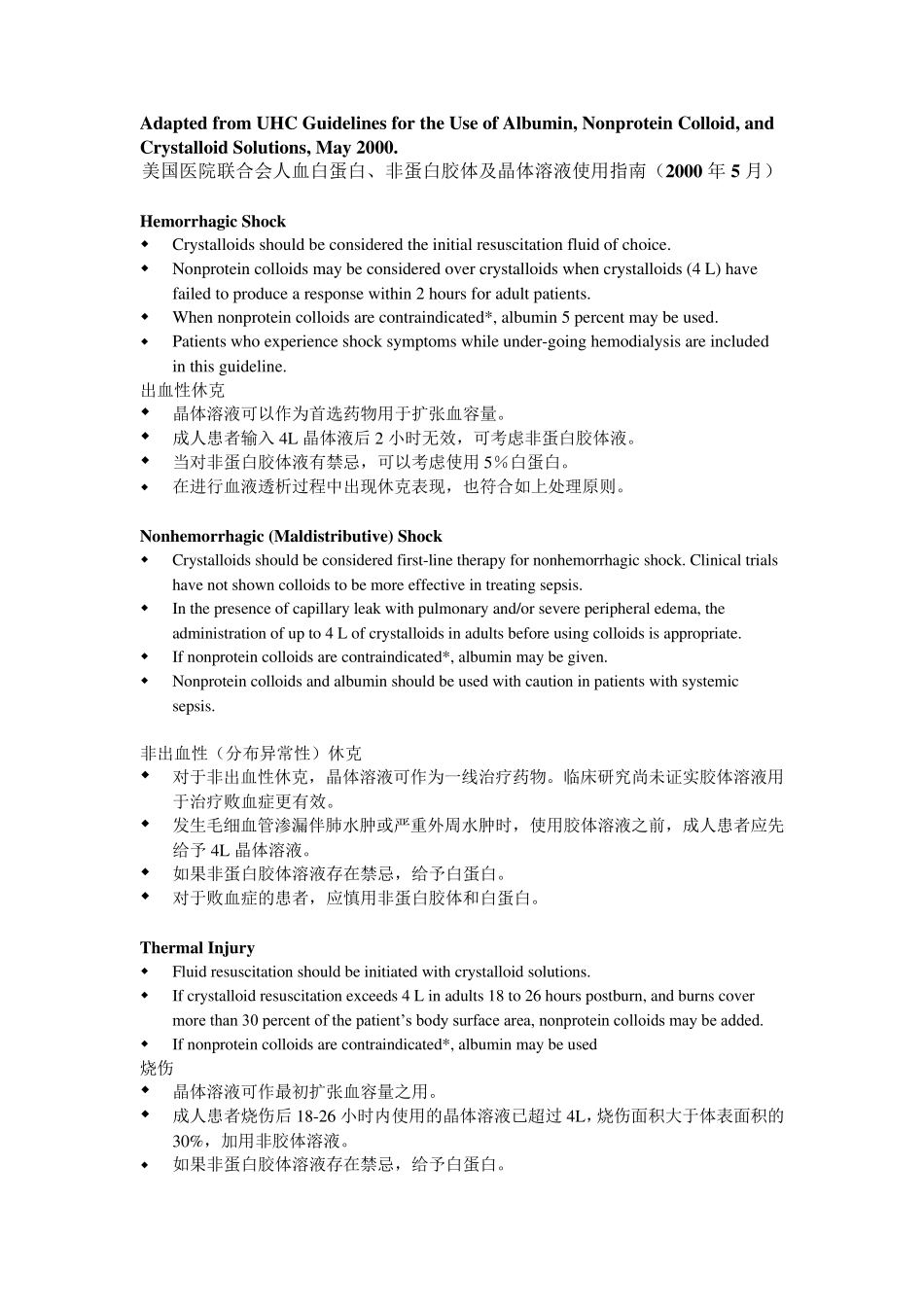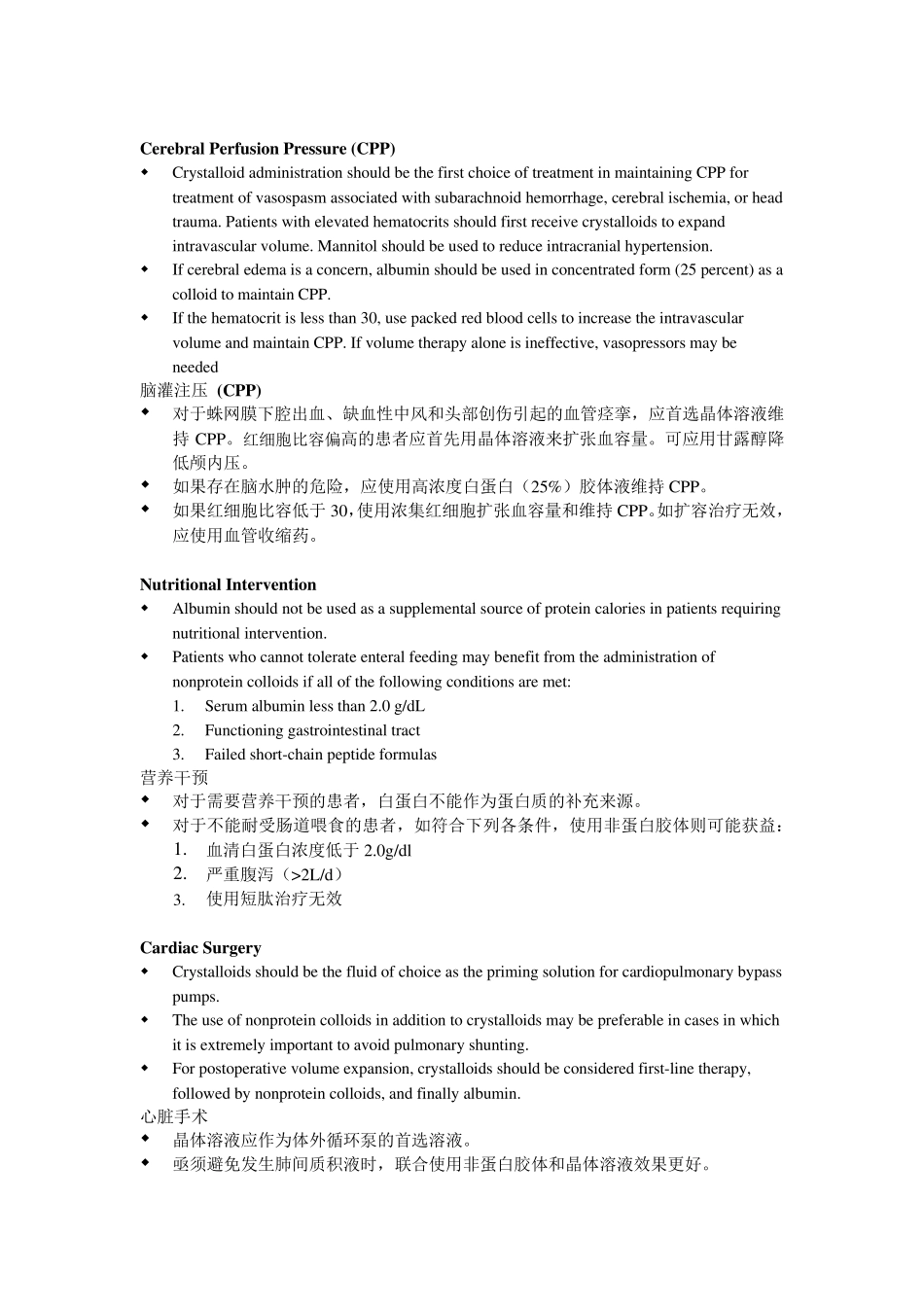Adapted from UHC Guidelines for the Use of Albumin, Nonprotein Colloid, and Crystalloid Solutions, May 2000. 美国医院联合会人血白蛋白、非蛋白胶体及晶体溶液使用指南(2000 年 5 月) Hemorrhagic Shock Crystalloids should be considered the initial resuscitation fluid of choice. Nonprotein colloids may be considered over crystalloids when crystalloids (4 L) have failed to produce a response within 2 hours for adult patients. When nonprotein colloids are contraindicated*, albumin 5 percent may be used. Patients who experience shock symptoms while under-going hemodialysis are included in this guideline. 出血性休克 晶体溶液可以作为首选药物用于扩张血容量。 成人患者输入 4L 晶体液后 2 小时无效,可考虑非蛋白胶体液。 当对非蛋白胶体液有禁忌,可以考虑使用 5%白蛋白。 在进行血液透析过程中出现休克表现,也符合如上处理原则。 Nonhemorrhagic (Maldistributive) Shock Crystalloids should be considered first-line therapy for nonhemorrhagic shock. Clinical trials have not shown colloids to be more effective in treating sepsis. In the presence of capillary leak with pulmonary and/or severe peripheral edema, the administration of up to 4 L of crystalloids in adults before using colloids is appropriate. If nonprotein colloids are contraindicated*, albumin may be given. Nonprotein colloids and albumin should be used with caution in patients with systemic sepsis. 非出血性(分布异常性)休克 对于非出血性休克,晶体溶液可作为一线治疗药物。临床研究尚未证实胶体溶液用于治疗败血症更有效。 发生毛细血管渗漏伴肺水肿或严重外周水肿时,使用胶体溶液之前,成人患者应先给予 4L 晶体溶液。 如果非蛋白胶体溶液存在禁忌,给予白蛋白。 对于败血症的患者,应慎用非蛋白胶体和白蛋白。 Thermal Injury Fluid resuscitation should be initiated with crystalloid solutions. If crys...


